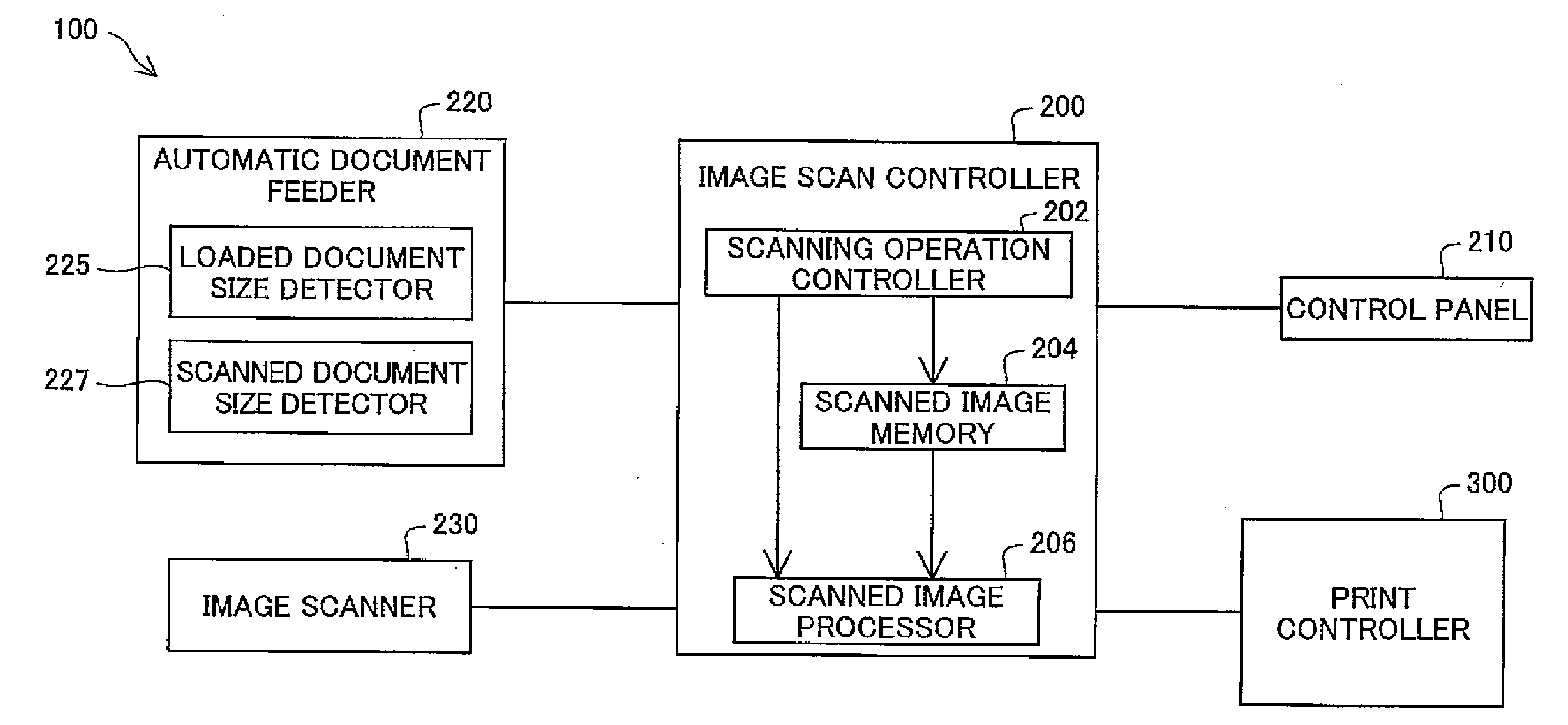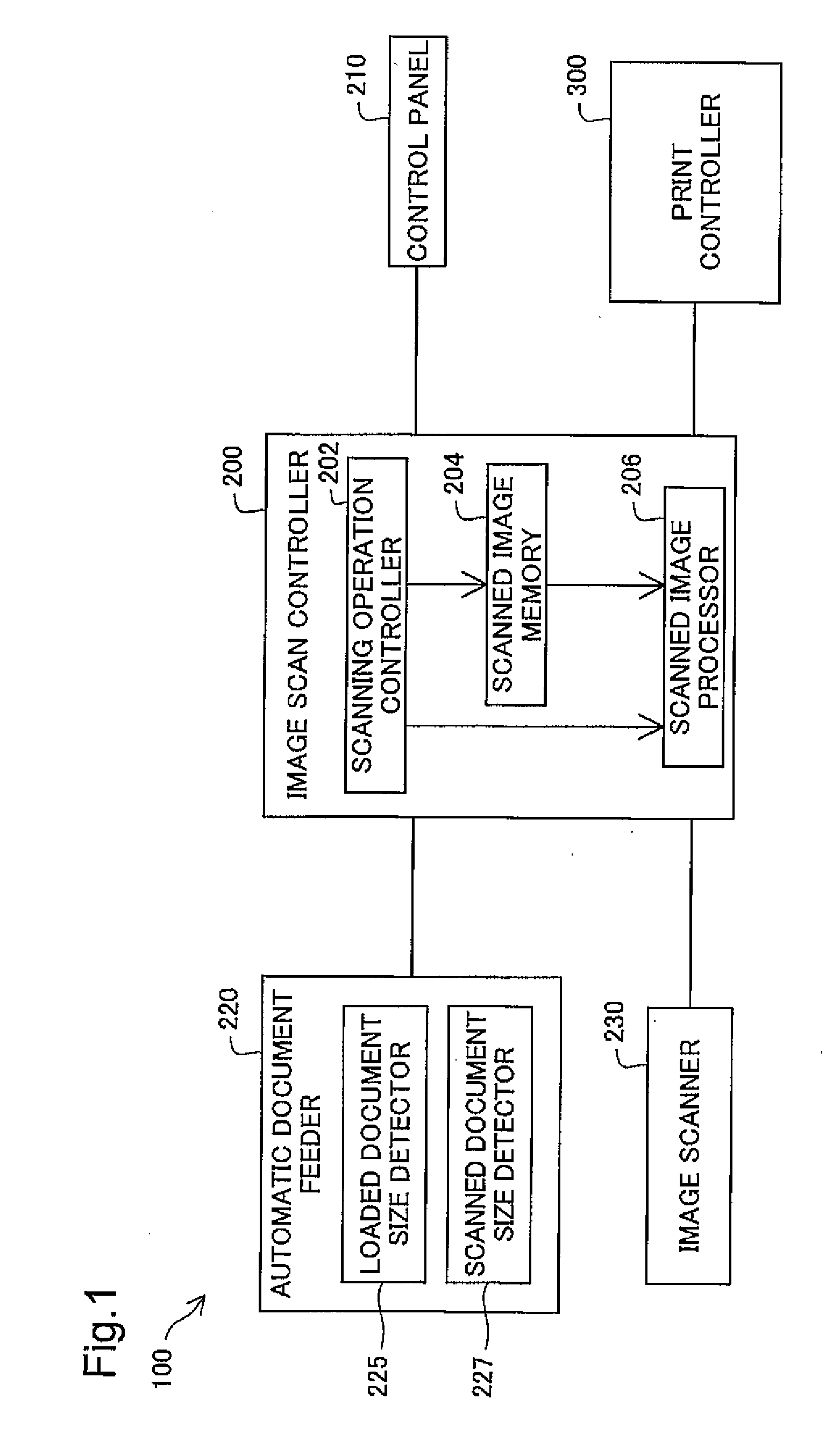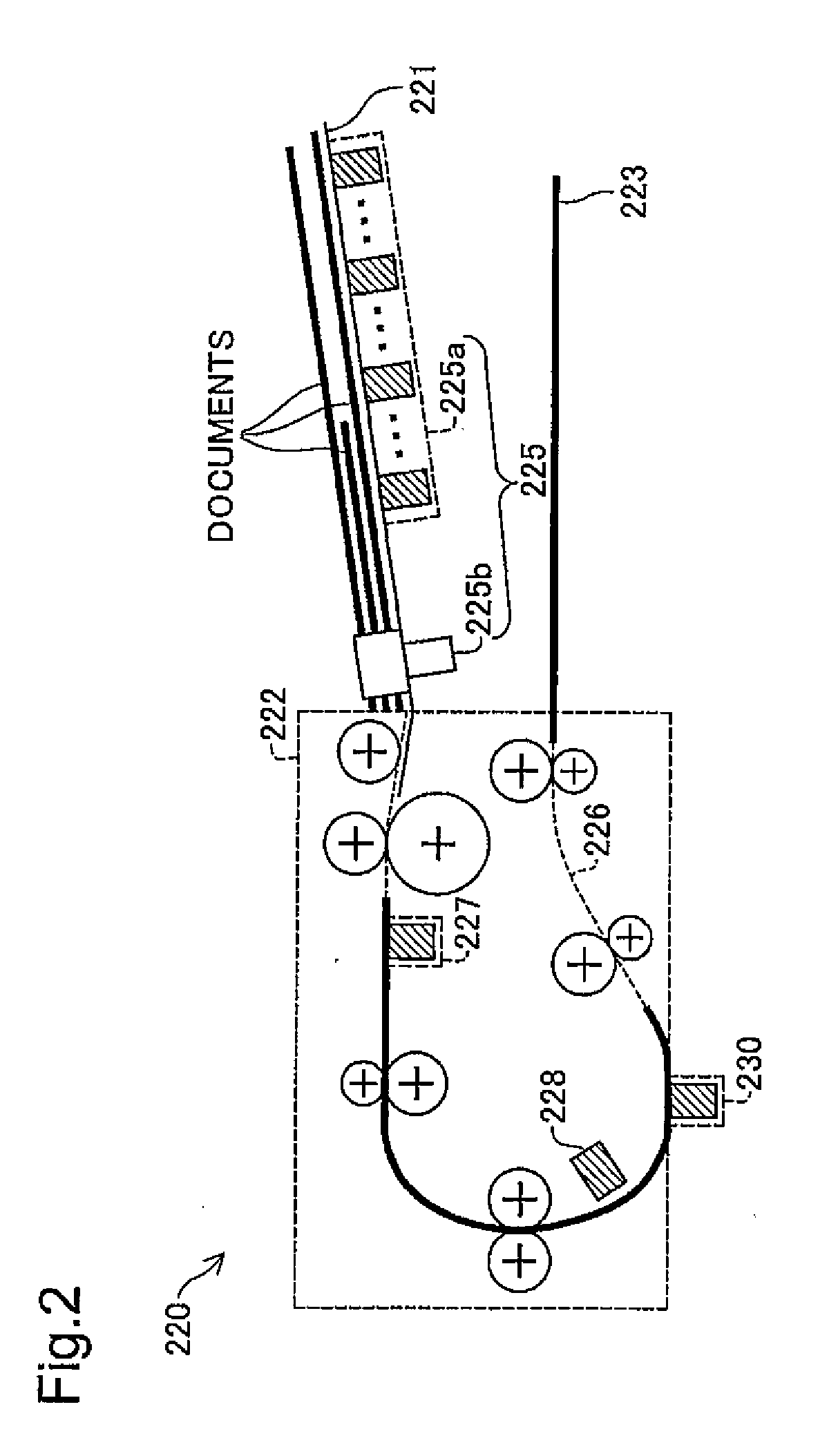Image Scanning Device and Image Scanning Method
a scanning device and image technology, applied in the field of image scanning devices, can solve the problems of not being able to reduce the memory capacity needed to store scanned data, the operation of the image sensor cannot be set, and the document cannot be detected in actual size, so as to reduce the amount of memory, without the risk of increasing processing time,
- Summary
- Abstract
- Description
- Claims
- Application Information
AI Technical Summary
Benefits of technology
Problems solved by technology
Method used
Image
Examples
Embodiment Construction
[0018]FIG. 1 is a block diagram depicting the principal parts of a copier device in which an image scanning device according to an embodiment of the present invention is implemented. This copier device 100 includes an image scan controller 200 that controls operation of the image scanning device that scans documents; and a print controller 300 that controls operation of a printing unit that outputs images represented by image data of scanned documents. A control panel 210, an automatic document feeder (ADF) 220, and an image scanner 230 are connected to the image scan controller 200. The image scanner 230 may be also referred to as “image reader 230.”
[0019]The image scan controller 200 and the print controller 300 are each equipped with a CPU, memory, and so on (not shown). Their respective functions are carried out through execution by the CPU of various programs stored in memory.
[0020]The image scan controller 200 has a scanning operation controller 202, a scanned image memory 204...
PUM
 Login to View More
Login to View More Abstract
Description
Claims
Application Information
 Login to View More
Login to View More - R&D
- Intellectual Property
- Life Sciences
- Materials
- Tech Scout
- Unparalleled Data Quality
- Higher Quality Content
- 60% Fewer Hallucinations
Browse by: Latest US Patents, China's latest patents, Technical Efficacy Thesaurus, Application Domain, Technology Topic, Popular Technical Reports.
© 2025 PatSnap. All rights reserved.Legal|Privacy policy|Modern Slavery Act Transparency Statement|Sitemap|About US| Contact US: help@patsnap.com



